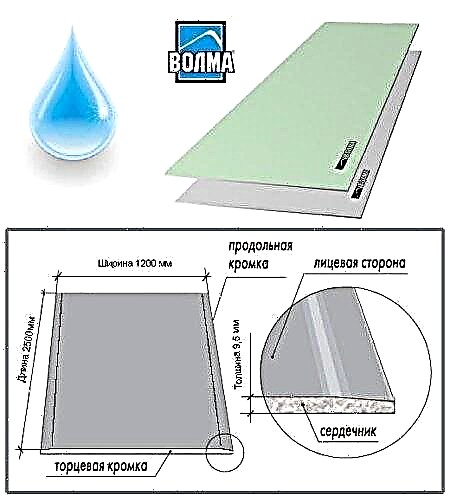When repairing apartments, owners often want to combine a balcony and a room or combine a balcony and a kitchen. In this article we will analyze all aspects and features of such a redevelopment. But in the beginning we will give a brief information for those who want to legitimize the association of a room with a balcony with the help of our specialists.
Combining a balcony with a room - negotiation and price.
To determine the price and reality of coordination of combining a balcony with a kitchen or a room in your apartment, please write to our mail mail@resog.ru, call +7 (495) 507-74-67 or fill out an online application. We will be happy to answer all your questions!
Below we will analyze all aspects and nuances of this type of redevelopment.
1. Translucent doors must be installed between the balcony and the interior.
Failure of the housing inspection to combine a balcony and a kitchen without a door
Of course, most people want the balcony to become part of a room or kitchen, expanding their area in this way. From the point of view of the law, before there were no rules that would directly prohibit such a redevelopment. However, in practice, to realize such ideas of combining a kitchen and a balcony or a room and a balcony, and obtaining the appropriate permission to redevelop the apartment, unfortunately, was impossible. If the project of redevelopment of the apartment between the balcony and the interior did not indicate the presence of doors, then the Housing Inspectorate, as an authorized body, issued a refusal to coordinate such redevelopment. They attributed such a combination of a balcony and a room or kitchen in accordance with paragraph 14 of Article 1 of the Town Planning Code of the Russian Federation to reconstruction. And reconstruction according to the same Town-planning code required obtaining a building permit in the Committee for State Construction Supervision of the city of Moscow. An example of such a refusal by the Housing Inspectorate is shown in the photo on the right. The list of documents required to obtain such permission was huge and is listed in paragraph 7 of Article 51 of the Civil Code. In fact, such an agreement was similar to obtaining permission to build an entire building. And even with all the necessary documents, Mosgosstroynadzor did not issue permission for such reconstruction. The officials explained their position on this issue as follows. When combining a balcony with a room or a kitchen, the heating system should also heat their area, which was not provided for in the design and construction of a residential building. If the balcony is combined with the internal premises in one apartment, then the heated area increases slightly and this does not affect the operation of the heating system. But if it is allowed to combine balconies in all apartments, then significant volumes of cold balconies with insufficient thermal insulation of building envelopes, which the heating system may simply not cope with, will be added to the internal premises, which will lead to an unacceptably low temperature inside the premises. Earlier, in 2012, the combination of a balcony with a kitchen or a room was allowed, and this was prescribed as a separate clause in the 508th Resolution of the Government of Moscow, but then a lot of complaints from apartment owners began to come to the Housing Inspectorate, because of the neighbors who carried out this association, freezing of external walls and ceilings occurred, as a result of which they were covered with mold and fungus. So a year later, on the initiative of the Zhilinspektsiya, this item was removed from the resolution, and they began to decisively refuse to issue permits for the unification of the balcony and kitchen or room. Now, Moscow Government Decree No. 508 has been supplemented with clause 10.19 of Appendix 1 with a clear ban on combining the balcony with the interior (as amended by Moscow Government Decree No. 1104 and PPM No. 1572 of 12/17/2018).
Thus, obtaining official permission to combine a balcony with a room or kitchen in its pure form is impossible with any tricks and for no money. Even if the corresponding warming of the balcony is made and its integration with the room, then it will not be possible to overcome the described obstacles. It is possible to dismantle the window sill block or part of the outer wall (for monolithic buildings), but sliding or hinged translucent doors (French windows) must be installed between the balcony and the room / kitchen.
Permission to combine the balcony and the kitchen (paragraph 1.2)
Thus, in the redevelopment project between the balcony and the interior, a sliding or hinged translucent partition must be indicated. In this case, the heating system does not need to heat additional areas and it is possible to obtain permission for redevelopment. If you planned the usual dismantling of the window frame and the door itself when you exit to the balcony (that is, the liquidation between the balcony and the window-door filling room), then it is better to do this after agreeing and accepting the rest of the redevelopment, because you will get new BTI plans for the apartment where they will not be indicated, for the reasons described above it is impossible. If you planned not only the liquidation of the window-door filling itself, but also the widening of the opening itself to the side by dismantling the window-sill block and / or part of the non-load-bearing enclosing wall, then such dismantling is indicated and agreed in the redevelopment project, and the installation is already drawn in the resulting opening described swing or sliding doors. Three options are possible.
- such doors are installed in reality forever. Firstly, such doors often quite organically fit into the design of the apartment. Secondly, they really protect against temperature drops inside the premises and the appearance of moisture, fungus and mold on the inner surfaces of the freezing walls with poor-quality balcony insulation. Often there are even times that people after the first winter with the integrated space of the balcony themselves install such doors to correct the above-described defects. Sometimes, if the dimensions of the piers on both sides of the balcony opening allow, opening such doors is done away from the opening, so that they can be kept open, thereby combining the space of the balcony and the interior.
- such doors are installed temporarily only at the time of the inspector’s and BTI’s technician’s entrance to the apartment, who check the compliance of the completed repairs with the agreed redevelopment project. After they leave, the doors are dismantled and cleaned to the mezzanine or cottage. In case of sale of an apartment, if necessary, they are put back. Moreover, in the new plans of the BTI apartment, their presence will still be noted. Unfortunately, agreement is only possible with this condition.
- such doors are not installed. Then, when the inspector and the BTI technician exit, they have to agree with them. The plans of the BTI, again, they will still be indicated. Recently, inspectors are required to take photographs of the presence of such doors when they enter the apartment, so in this case, they will also have to carry out the appropriate photo montage (add a door in Photoshop).
Unfortunately, there are no other ways to coordinate the integration of a balcony with a room or kitchen.
According to BTI documents, the balcony will still remain a balcony. From the point of view of thermal insulation, these translucent swing or sliding doors should be made of double-glazed windows, and this is mandatory in the corresponding redevelopment project. However, in practice, inspectors rarely find fault with this, so it is possible to install such doors of single glass or double-glazed windows.
2. Combining a balcony with a room or kitchen with the elimination of the door sill and window sill.
In monolithic buildings, it is possible to dismantle the window sill and sills, since they are not bearing.
Permission to combine the balcony with the room (paragraph 1.7)
In panel buildings, it is forbidden to clean the door sill.
Firstly, this violates the integrity and rigidity of the external hinged panels. Secondly, when performing such dismantling in lower apartments, freezing of floor slabs often occurs with the formation of condensate, mold and fungus. Therefore, the authors of the typical series of projects do not give their permission for this type of conversion, and without their consent in accordance with paragraph 1.4.7 of Appendix 3 to Moscow Government Resolution No. 508, it is impossible to count on obtaining permission for this redevelopment. In fact, only a decrease in the height of the nut is possible, which is not displayed in the project, but it is almost impossible to track when accepting the redevelopment due to the fact that this height is not indicated anywhere in the documents for the apartment. Thus, the inspector and BTI technician can track only the presence or absence of such a nut, but not its height.
It is possible to dismantle the window sill and obtain official permission for this in panel buildings that were commissioned before 2007.
For panel residential buildings built after 2007, which were designed by MNIITEP (and this is the vast majority of panel buildings in Moscow), the dismantling of the window sill is prohibited. MNIITEP prohibits affecting window sill blocks in such houses, as this violates their protection from progressive collapse. In other words, it is impossible to obtain permission from the project developer at home for such a redevelopment, and without it, as mentioned above, it is impossible to agree on a redevelopment. Thus, the combination of a balcony and a kitchen (room) in a panel building designed by MNIITEP and built after 2007, with the dismantling of the window sill, is impossible. If a panel house was built after 2007, but its developer is not MNIITEP, then the possibility of eliminating the space under the window depends on the position of the developer of the building's building project.
In brick and block houses, this issue is even more complicated. If the balcony slab is not embedded in the outer brick wall and rests on separate external supporting walls, then it is possible to dismantle the door sill and window sill. such work will not cause collapse or bending of the balcony slab. If this plate is embedded in the enclosing wall in the form of a console, then the dismantling of the window sill or the sill can lead to its collapse. In this case, the possibility of dismantling should be determined by experienced specialists during the technical inspection of the apartment. This possibility is determined by the sufficiency of the remaining jamming of the plate along the edges of the doorway. Sometimes, in such cases, dismantling is possible only with a corresponding reinforcement of the jamming of the plate with metal structures.
At the same time, one should not forget that in place of the dismantled window sill in the redevelopment project, it is necessary to indicate the installation of doors, as we discussed in detail in the first paragraph of this article.
3. Combining a balcony with a kitchen or a room with an extension of a window-doorway.
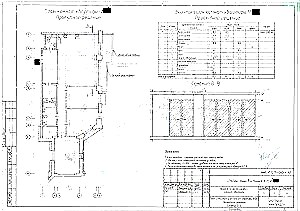
Combining a balcony with a room - coordination
Expansion of the opening when accessing the balcony in panel, block and brick buildings is impossible.
In prefabricated houses, this leads to a violation of the rigidity and strength of the outer enclosing panels, so the authors of the standard series of projects categorically do not issue their permits for this type of redevelopment, which the Housing Inspectorates are aware of, as the authority authorized to issue permits. In brick and block buildings, the outer walls are load-bearing or self-supporting, and the expansion of the opening through partial dismantling is also not allowed.
In monolithic buildings, if the outer wall is not bearing, expansion of the balcony opening to the sides is possible.
Most often, the external walls in monolithic buildings are made of three layers of a layer of foam concrete (gas silicate, slag concrete, etc.) blocks, a layer of insulation (polystyrene foam, mineral wool slabs, etc.) and a layer of facade plaster (facing brick, a ventilated facade system and t .d.). Such walls are carried out with floor-to-floor support on floor slabs and are non-bearing, so that their partial dismantling will not affect the load-bearing capacity of the building, in general. At the same time, one should not forget that certain sections of the outer walls can be made of monolithic reinforced concrete and be load-bearing. Then their dismantling is prohibited. In general, it is better to entrust the definition of the purpose of the external walls and the possibility of their dismantling to an experienced specialist who will carry out the appropriate technical conclusion on the redevelopment of such works, necessary to agree on the redevelopment. The possibility of increasing the balcony opening up in monolithic buildings depends on the following factors. If a non-bearing wall is located above such an aperture, then the dismantling of the space above the aperture is possible to the floor slab. If a bearing reinforced concrete crossbar passes over the opening, then it cannot be cut and the opening can be increased in height only up to this crossbar.
Again, at the place of the dismantled wall, the installation of the doors should be indicated in the redevelopment project, which separates the cold room of the balcony from the interior of the apartment, which we examined in detail in the first paragraph of this article.
Also, when touching the external walls, one should not forget that according to paragraph 6.20 of SNiP 21-01-97, at least one balcony with a fire wall is required inside the apartment. The minimum length of such a wall should be either 1200 millimeters from the edge of the balcony railing to the edge of the door or window opening at the exit to the balcony, or 1600 millimeters between two exits to one balcony. The presence of such a wall is not necessary if the floor of the apartment is located at a height of the building no more than 15 meters (but installing a French window instead of it is mandatory). Also, the piers can not be saved, but instead perform heat-resistant glass.
4. Dismantling of the window sill and part of the outer wall requires approval on the redevelopment project.
According to paragraph 3.1 of Appendix 1 to Decree of the Government of Moscow No. 508, changing the shape of a window or doorway in a building envelope requires obtaining preliminary permission from the Housing Inspectorate to conduct such events on the basis of an apartment redevelopment project. The dismantling of the window sill and the outer wall to expand the balcony aperture, of course, refers to a change in the shape of the window and door openings, and therefore require the implementation of the appropriate redevelopment project. Read more about apartment redevelopment projects here. Moreover, this project should be supplemented in accordance with clause 4.7 of Appendix 3 of the same resolution with a technical opinion on the admissibility and safety of such work, as well as thermal engineering calculation.
5. It is forbidden to take out radiators on the balcony.
This prohibition is described in paragraph 10.7 of Appendix 1 to Moscow Government Resolution No. 508. But it prohibits the placement of water radiators and underfloor heating from risers of the heating system on balconies. Placement on the balcony of electric radiators and underfloor heating is not prohibited by any standards and is possible.
Technical part
From a technical point of view, there are two components.The first is the admissibility of connecting the loggia or balcony with respect to the type and condition of the house structures, since the connection, as a rule, implies the demolition of the window sill, which can perform a bearing function or participate in jamming of the balcony slab - to hold it.
The second component is associated with heating - the heat circuit of the house, formed by its walls, including windows, and the roof, is broken if it is necessary to heat additional areas using central heating.
The negative experience of such associations has already taken shape. Until 2012, Moscow housing inspectorates allowed loggias to be connected to rooms and kitchens on the basis of the corresponding clause in the 508th resolution of the Moscow Government regulating redevelopment. But in the 840th, adopted in 2012 and the current edition, this paragraph disappeared.
This happened after fixing the facts of freezing of the external walls and floors, as well as the formation of excessive condensate and mold that occurred as a result of these redevelopments. This does not mean that accession is prohibited today. But serious restrictions appeared.
Connection options
1. Accession with the demolition of the window sill. Perhaps in monolithic prefabricated pre-2007 buildings, some brick houses, it is prohibited in most prefabricated houses built after 2007.
Monolithic houses are the easiest option for this type of redevelopment thanks to non-supporting external walls. In brick houses, this possibility is due to whether the window sill is involved in the jamming of the balcony slab. If so, the balcony after the demolition of the window sill block may collapse.
2. Connection with the demolition of the window sill block, including the door sill under the balcony door and the jumper above it and the window. Perhaps in monolithic, some brick, completely forbidden in panel houses.
3. Joining with the expansion of the existing opening by disassembling the side piers. Perhaps in monolithic, in rare cases - brick, it is completely forbidden in panel houses. At the same time, the apartment should have more than one loggia (balcony) and on one (s) of them the wall must be preserved so that it can be hidden in case of fire before the rescuers arrive.
In order to find out what manipulations can be performed in your house, you need to get a technical opinion on the admissibility and safety of work from the author of the house project. You can calculate it by a series of houses.
If the house was built according to an individual project and the author of the project is no longer available, the technical conclusion must be ordered at the State Unitary Enterprise Moszhilniiproekt, to which the Moscow Government has delegated the obligation to examine such houses. In some housing inspections, the technical conclusion is allowed to be ordered in private design organizations, which is much faster and cheaper.
Preservation of the thermal circuit: what is not and what is possible
According to the standards existing today, it is impossible to completely attach (include in the heated circuit) the cold zone, which is a loggia or balcony, to the heated one.
But you can attach a loggia or a balcony by installing glass doors between the apartment premises and the area to be attached, thereby creating a boundary between the heated area and the unheated. Doors can be sliding or swinging, in wooden or plastic frames.
Design organizations-authors of houses in their technical conclusions recommend the use of double-glazed windows to reduce heat loss to a minimum. Of course, outside the heating season, doors can be constantly opened.
Thus, even with the existing restrictions, you can attach a loggia by adding additional doors to the design project or vice versa - by building the entire interior from them. But the implementation of this idea is not budgetary.
For approval, in addition to the technical conclusion, a project with load calculations and a heat engineering calculation will be needed, in accordance with which in the future it will be necessary to warm the connected area. If in the results of the technical conclusion one of the conditions is the strengthening of structures, the implementation will cost more.
Warming: restrictions and prohibitions
Perhaps, in this plane lie the main “cons”. Thermotechnical calculations provide for a very significant warming of the loggias and balconies to be joined, including both insulation and vapor barrier, due to which their area and, possibly, height will be reduced due to the thickness of the “pie”. There may also be restrictions on the area of glazing - to reduce heat loss.
If the warming scheme is not followed, there is a high probability of condensation and, as a result, mold, and further damage to the finish. In any case, there will be a risk zone in the corners of the attached loggia - the so-called cold bridges.
It is not enough to insulate the loggia with building materials to maintain the average room temperature on it. An additional heat source must be installed.
It is impossible to heat a loggia or a balcony with central heating batteries - the legislation contains a direct ban on their transfer. Firstly, the heating system may not be able to cope with the increased load, and the temperature in the living quarters of the entire house will drop below the standard. Secondly, the resulting temperature difference between the heated loggia and adjacent unheated logs negatively affects the rigidity of the structures.
It is forbidden to arrange warm water floors on the joined balconies and loggias - the same as in the whole apartment. Electric - you can. The best option for heating is a convector with a capacity of at least 1 kW, capable of quickly heating cold air. But you will have to pay for this pleasure - electricity bills will increase significantly.
And one more detail: due to two rows of glazing, the natural illumination of the room adjacent to the loggia is reduced.
* Recommendations are given for Moscow, in other regions the standards may vary.
6. Combining the interior with verandas and conservatories.
The possibility of such a combination is determined by how the verandas or conservatories are indicated in the explication of the BTI for the apartment. If in the explication these rooms are assigned to the total area, then they are no different from other heated rooms and can be easily combined with them. If the veranda or conservatory are attributed to auxiliary rooms in the explication, they are thereby equated to balconies. Then all the aspects of combining the balcony with the interior discussed above are absolutely also applicable to them.
It should also be noted that in the inventory documents for the apartment (plans and explications of the BTI) the real area of the balcony is multiplied by a reduction factor of 0.3. So, the area of the balcony indicated in the documents is absolutely legally different from its actual area, and this should not be scared.
At the end of the article we give examples of agreed projects. We also recommend that you read the article on the redevelopment of the apartment - what is possible and what is not.
Features and Benefits
Combining a balcony with a living room is perhaps the only way to increase usable living space, especially in small-sized apartments. After planning and a number of installation works, you can get a new very original interior. There are 2 ways of such a combination: removing the window and balcony door without window sill or completely dismantling it together with the door sill. In the second case, it is necessary to coordinate the redevelopment with utilities and BTI, and the complexity of the work increases.
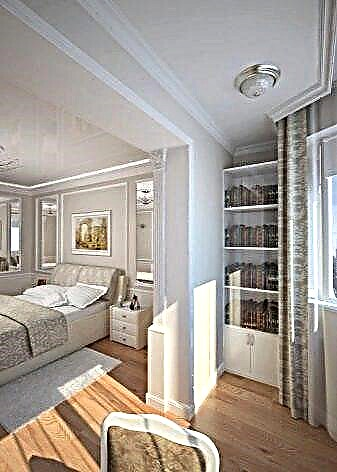
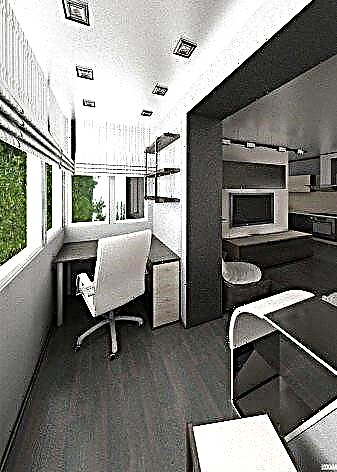
Combining a balcony with a room has the following advantages:
- the area of the room is increasing,
- the room becomes more lighted
- the apartment takes on an original design.
- But this method of expanding usable space has its drawbacks:
- the complexity of the work
- in the case of the complete dismantling of the sill and window sill, the mandatory coordination with the BTI,
- additional thermal insulation is required.
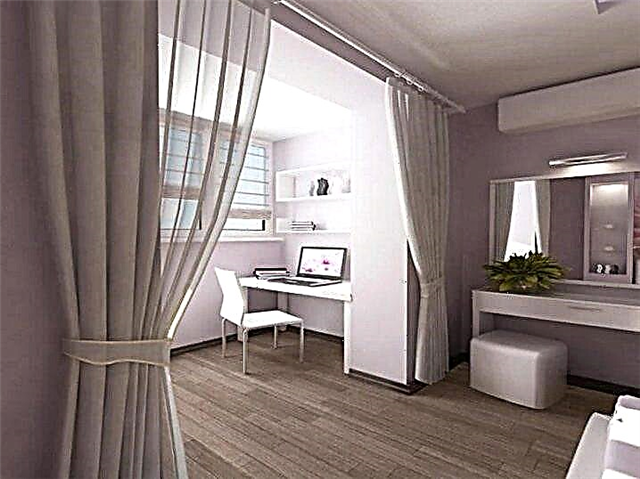
If all these difficulties do not scare the owners of the apartment, then you can start work, which will include 4 stages: creating a redevelopment project, coordination in the BTI, dismantling existing ceilings, decorating a new space.
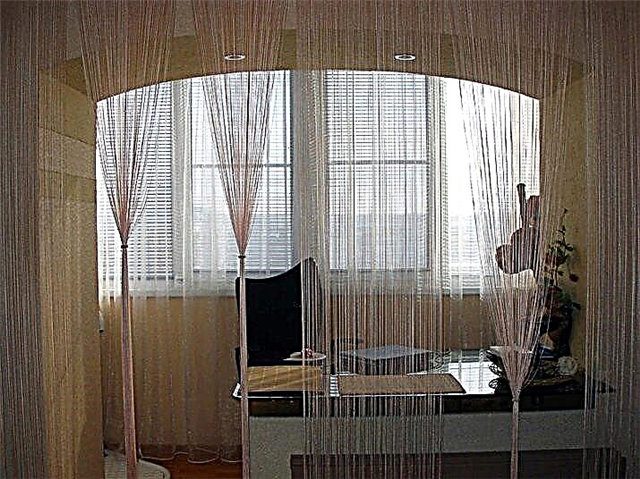
Coordination in the BTI
If it is planned to completely demolish the balcony, it will not be easy to legalize all operations; a number of documents are required from government agencies, in particular, permission from the housing inspectorate and a detailed work plan agreed with the design organization. First, you should contact the BTI and take the registration certificate for the apartment, then order the redevelopment project with the appropriate organization with it. Such contractors must have a mandatory certificate for such work.
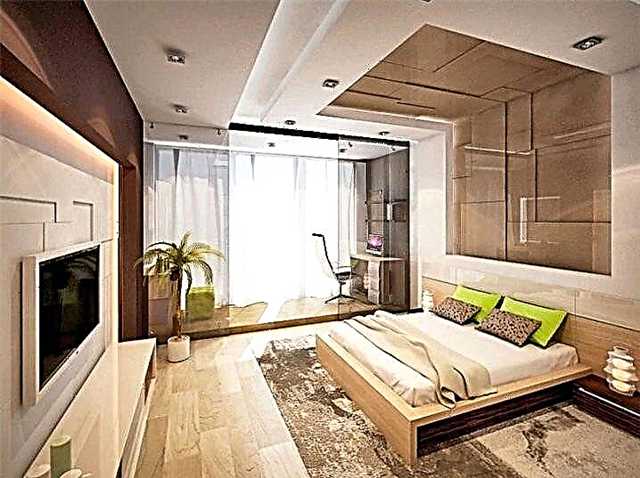
There are many nuances associated with the dismantling of balcony ceilings. For example, a balcony must necessarily have glazing with sliding doors; it is impossible to bring radiator batteries to its territory from a dismantled window sill. If all redevelopment works are approved by the housing inspectorate, then you can proceed with their implementation. At the end of the dismantling, a commission is called up that evaluates the redevelopment and draws up an act of completion. With this document, you must again contact the BTI to reissue the registration certificate for an apartment with a new layout.
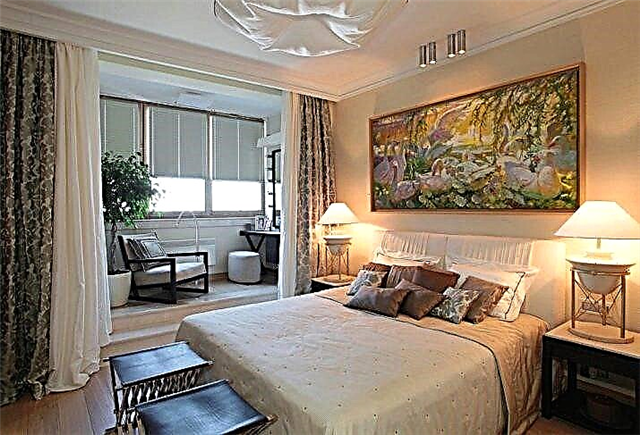
How to make a redevelopment
Before starting any redevelopment, it should be remembered that the balcony and living room have a different climate, so the converted room should be comfortable for living in all seasons. On the loggia, usually a minimum of cladding and bare concrete partitions, and in the combined room it is worthwhile to make high-quality interior decoration and thermal insulation.
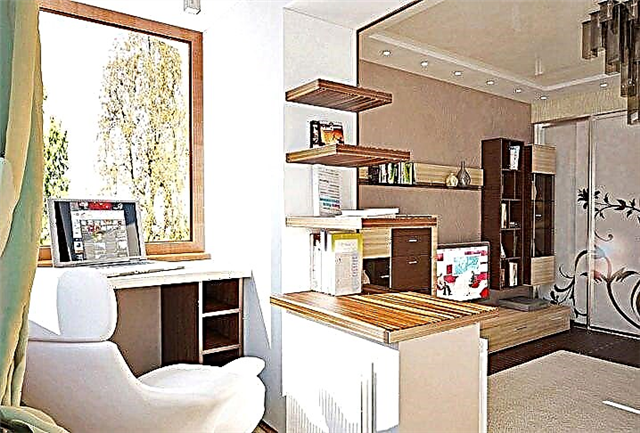
With a simple expansion of the room without dismantling the supporting structures and coordination in utilities, the task is to remove the windows, frames, doors and door frames and subsequent decoration and insulation of the resulting space. First, the doors are removed from the hinges, ordinary windows with window leaves or double-glazed windows. Then remove the frames, door frame and fixing beams. To do this, you need: a crowbar or a small mount, a hacksaw for wood and a hammer. In a prefabricated house, especially if double-glazed windows have been installed before, there may be metal pins that need to be cut with a grinder or a hacksaw for metal.
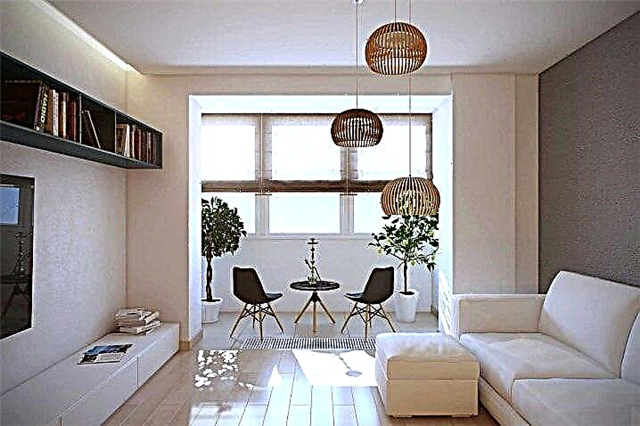
The main problem that is primarily encountered when continuing work is the different floor levels in the room and on the loggia. This is due to the fact that the bearing plates have different thicknesses. To extend the floor of the same level from the room, bulk technologies can be used with the help of dry leveling mixtures. This method has a significant drawback - there will be a heavy load on the balcony floor, these plates may not be designed for such a weight.
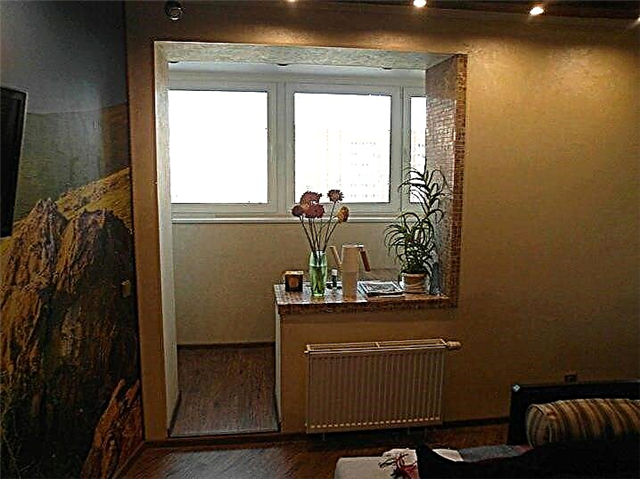
Another more effective and safe way to combine levels in both rooms is to use floors with wooden frames. At the same time, one more advantage will be achieved: under the top layer of such a coating, it is possible to place thermal insulation from foam, mineral wool or other insulating material, additional protection against moisture or a heating system.
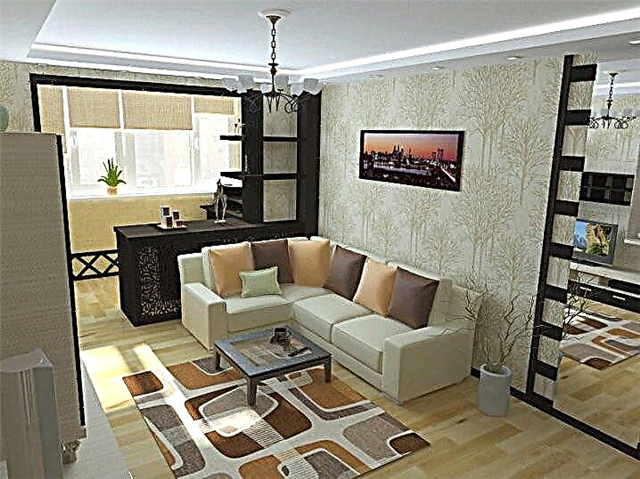
Next, the question arises of the insulation of the front and side walls of the balcony. The combined room will have a larger volume, and the external walls of the loggia in standard apartments are not so insulated as to maintain a comfortable temperature in winter. The difficulty is that it is impossible to extend the batteries from central heating to the balcony area. Therefore, it is necessary to insulate as much as possible the external walls.
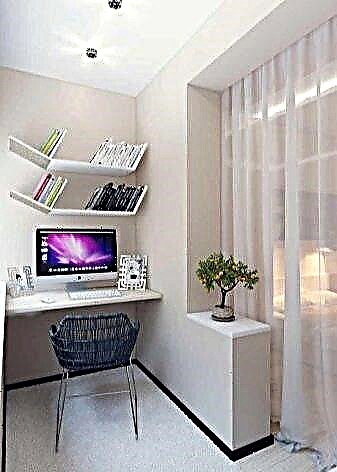
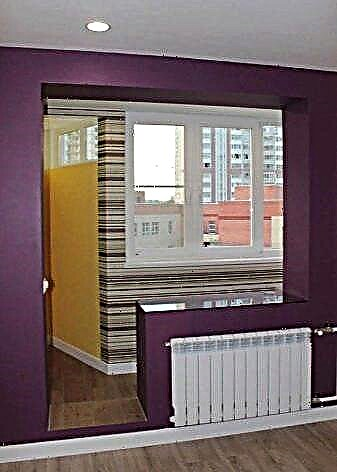
For insulation, as well as vapor barrier, protection against noise and moisture, penofol is effective - a material made of foamed polyethylene and a coating of foil. It has a small thickness, therefore, it saves space, is delivered in rolls and glued with aluminum tape. The second suitable insulation is foam, the main advantage of which is the price. But despite the low cost, it effectively copes with protection from the cold. Foam sheets are fixed in the wall frame, the cracks between them are foamed, moisture and steam protection is installed upstairs, then the finish coating.
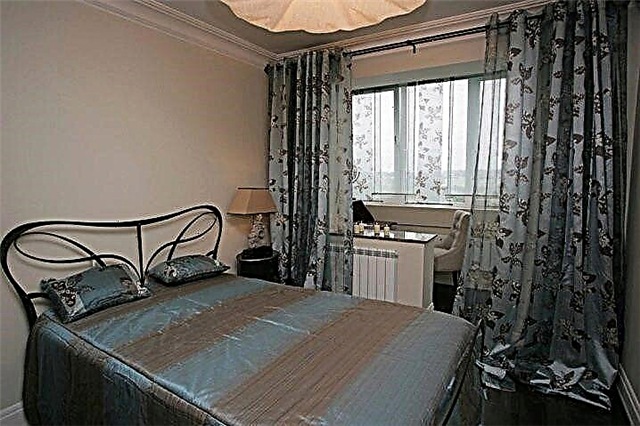
Mineral wool is an inorganic material made of fiberglass. Compared with other heat insulators, it has a major drawback - during installation it pricks, even if you protect your hands and face as much as possible, some particles will get on your skin, which causes discomfort. But unlike other materials, it can clog any gap.
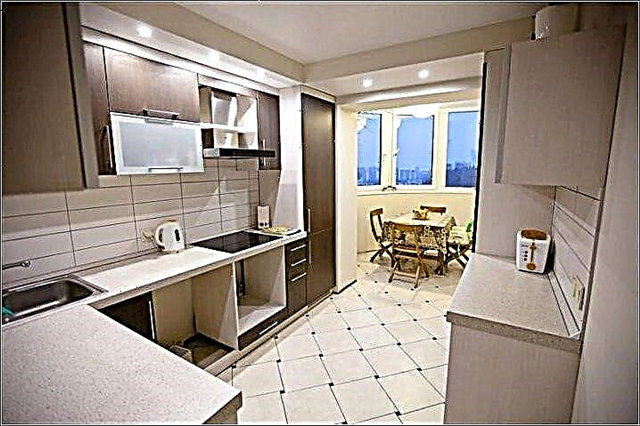
The most expensive material for warming the balcony is a foam or foam polystyrene with a layer of foil. It has not only excellent thermal insulation, but also vapor protection, resistance to moisture and chemical influences. Foam rolls are easily rolled into a thin and durable layer.
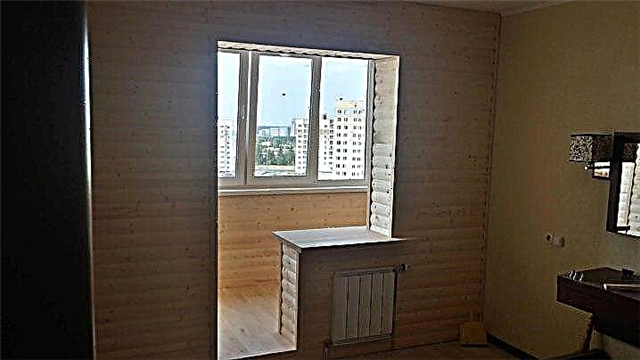
Some owners, when combining the loggia and apartment, also use external thermal insulation from the street. To do this, they can mount a thermal coat based on mineral wool or foam. The complexity of the work lies in the fact that it is problematic to install an insulating layer on the external walls of the apartment. Therefore, for high floors, some are forced to order special vehicles for work.
Combining a balcony with room p-44t.
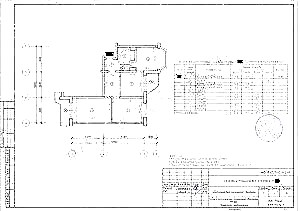
This redevelopment was carried out and agreed in the panel building of p-44 t. The window-sill areas of the window-doorway in two rooms were dismantled, thereby combining them with balconies. Moreover, in accordance with the reasons described in paragraph one of this article, the installation of doors is indicated between the balcony and the rooms in the project, the presence of which on the plans of the BTI is indicated by a dash.
The combination of a balcony and a kitchen in a panel house.
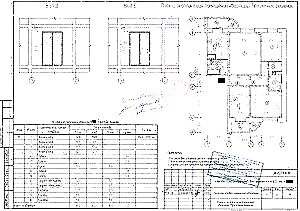
In this example, the balcony was combined with the kitchen in the panel house (indicating the mandatory installation of sliding doors). In another part of the apartment, another integration of the balcony with the room was carried out. Despite the fact that the house was built in 2008, it was possible to agree on the dismantling of the window sill, as the author of the project was not the design institute of MNIITEP.
Combining a balcony with a lounge.
Here is another consistent implementation of the idea of combining a balcony with a room. Since the balcony rests on separate retaining walls, and is not pinched in the outer wall, we managed to dismantle the window sill block without any reinforcements.
Combining a balcony with a bedroom.
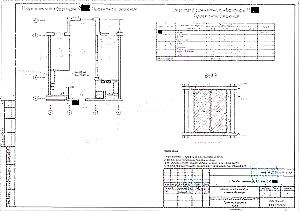
In this redevelopment, the kitchen was transferred to the bathroom area, and on the site of the former kitchen, a bedroom was built and combined with a balcony. The doorway between the bedroom and the balcony is made almost the entire wall, which creates a feeling of a single space of these rooms. Now, unfortunately, it has already been banned to expand or place the kitchen in the area of the bathroom and wet rooms.



